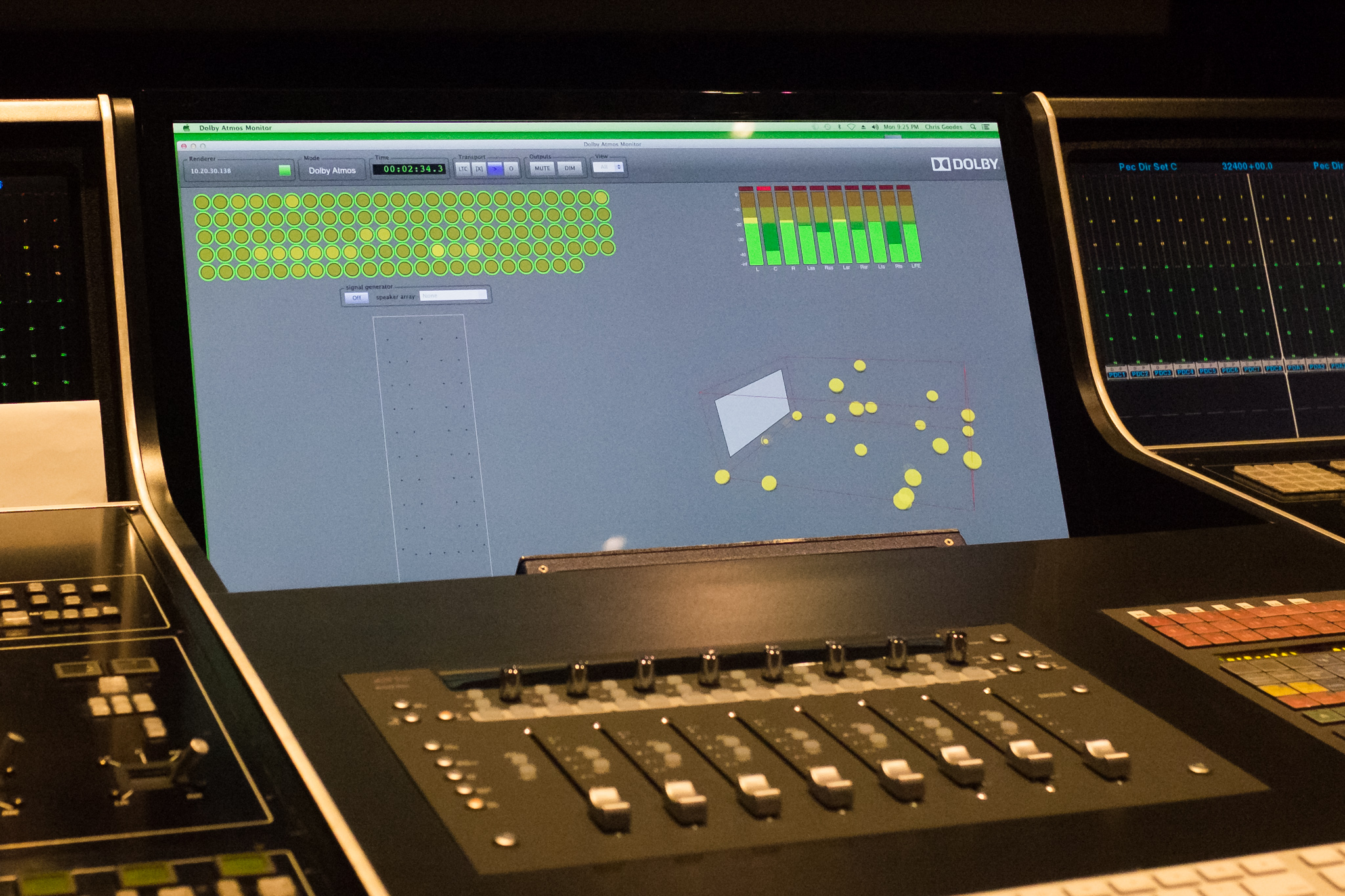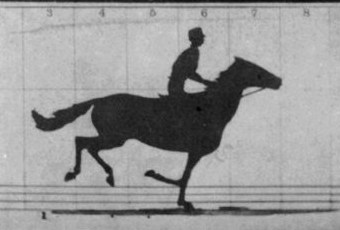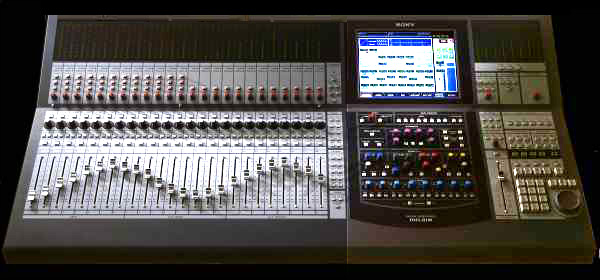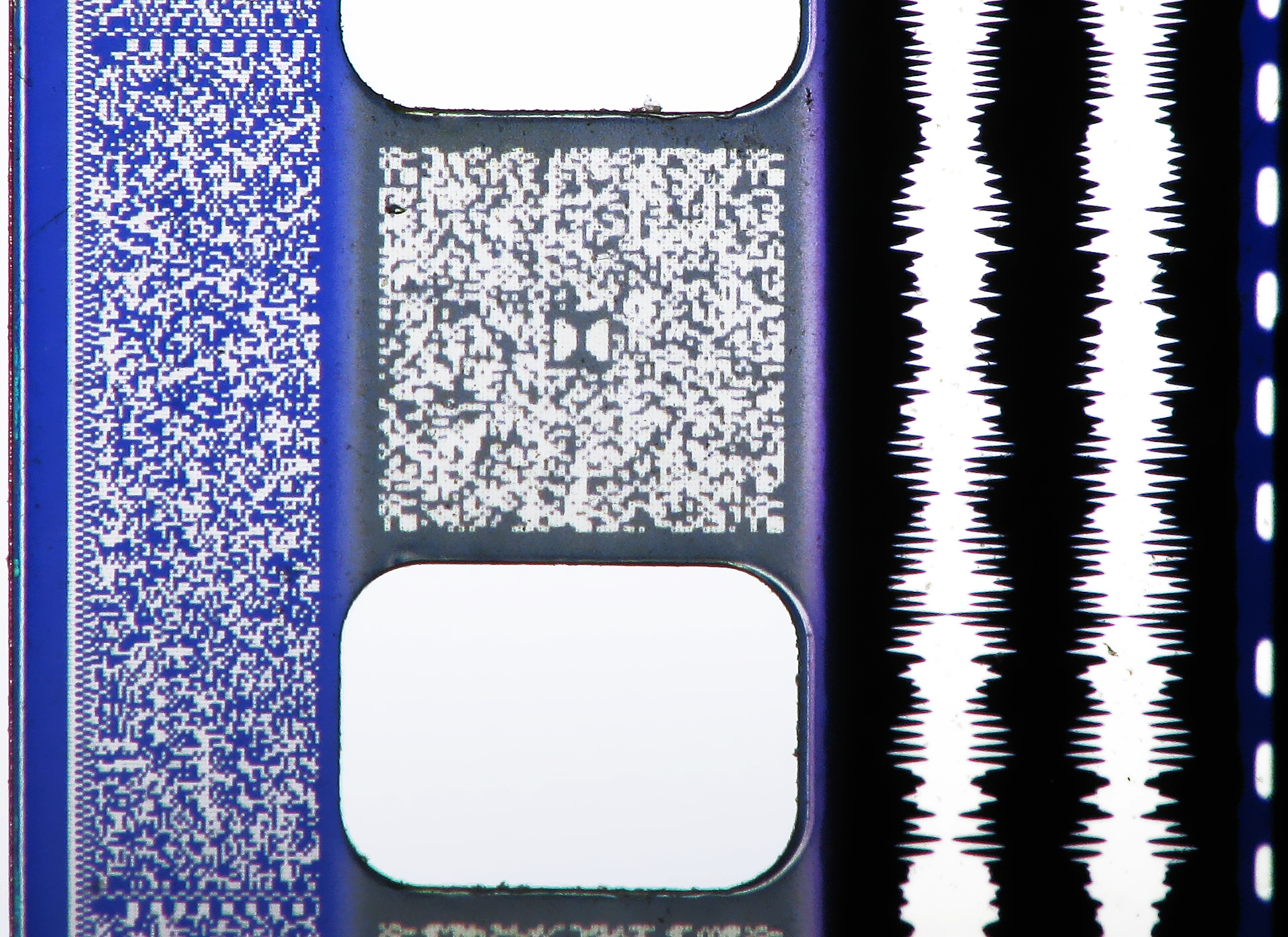|
Dolby Digital Plus
Dolby Digital Plus, also known as Enhanced AC-3 (and commonly abbreviated as DDP, DD+, E-AC-3 or EC-3), is a digital audio compression scheme developed by Dolby Labs for the transport and storage of multi-channel digital audio. It is a successor to Dolby Digital (AC-3), and has a number of improvements over that codec, including support for a wider range of data rates (32 kbit/s to 6144 kbit/s), an increased channel count, and multi-program support (via substreams), as well as additional tools (algorithms) for representing compressed data and counteracting artifacts. Whereas Dolby Digital (AC-3) supports up to five full-bandwidth audio channels at a maximum bitrate of 640 kbit/s, E-AC-3 supports up to 15 full-bandwidth audio channels at a maximum bitrate of 6.144 Mbit/s. The full set of technical specifications for E-AC-3 (and AC-3) are standardized and published in Annex E of ATSC A/52:2012, as well as Annex E of ETSI TS 102 366. Technical details Specif ... [...More Info...] [...Related Items...] OR: [Wikipedia] [Google] [Baidu] |
Dolby Laboratories
Dolby Laboratories, Inc. (Dolby Labs or simply Dolby) is a British-American technology corporation specializing in audio noise reduction, audio data compression, audio encoding/compression, spatial audio, and high-dynamic-range television (HDR) imaging. Dolby licenses its technologies to consumer electronics manufacturers. History Dolby Labs was founded by Ray Dolby (1933–2013) in London, England, in 1965. In the same year, he invented the Dolby noise-reduction system, Dolby Noise Reduction system, a form of audio signal processing for reducing the background hissing sound on cassette tape recordings. His first U.S. patent on the technology was filed in 1969, four years later. The method was first used by Decca Records in the UK. After this, other companies began purchasing Dolby’s A301 technology, which was the professional noise reduction system used in recording, motion picture, broadcasting stations and communications networks. These companies include BBC, Pye Records ... [...More Info...] [...Related Items...] OR: [Wikipedia] [Google] [Baidu] |
Dolby Atmos
Dolby Atmos is a surround sound technology developed by Dolby Laboratories. It expands on existing surround sound systems by adding height channels as well as free-moving sound objects, interpreted as three-dimensional objects with neither horizontal nor vertical limitations. Following the release of Atmos for the cinema market, a variety of consumer technologies have been released under the Atmos brand. The initial cinema Atmos systems used in-ceiling loudspeaker, speakers, then upward-firing speakers (e.g. for soundbars) were introduced as an alternative for consumer products. Atmos is also used on some devices that do not have a height channel, such as headphones, televisions, mobile phones, and Tablet computer, tablets. History The first Dolby Atmos installation was in the El Capitan Theatre in Los Angeles, for the premiere of Brave (2012 film), ''Brave'' in June 2012. Throughout 2012, it saw a limited release of about 25 installations worldwide, with an increase to more t ... [...More Info...] [...Related Items...] OR: [Wikipedia] [Google] [Baidu] |
Audio Codecs
An audio codec is a device or computer program capable of encoding or decoding a digital data stream (a codec) that encodes or decodes audio. In software, an audio codec is a computer program implementing an algorithm that compresses and decompresses digital audio data according to a given audio file or streaming media audio coding format. The objective of the algorithm is to represent the high-fidelity audio signal with a minimum number of bits while retaining quality. This can effectively reduce the storage space and the bandwidth required for transmission of the stored audio file. Most software codecs are implemented as libraries which interface to one or more multimedia players. Most modern audio compression algorithms are based on modified discrete cosine transform (MDCT) coding and linear predictive coding (LPC). In hardware, audio codec refers to a single device that encodes analog audio as digital signals and decodes digital back into analog. In other words, it cont ... [...More Info...] [...Related Items...] OR: [Wikipedia] [Google] [Baidu] |
Digital Audio
Digital audio is a representation of sound recorded in, or converted into, digital signal (signal processing), digital form. In digital audio, the sound wave of the audio signal is typically encoded as numerical sampling (signal processing), samples in a continuous sequence. For example, in CD audio, samples are taken 44,100 Hertz, times per second, each with 16-bit audio bit depth, resolution. Digital audio is also the name for the entire technology of sound recording and reproduction using audio signals that have been encoded in digital form. Following significant advances in digital audio technology during the 1970s and 1980s, it gradually replaced comparison of analog and digital recording, analog audio technology in many areas of audio engineering, record production and telecommunications in the 1990s and 2000s. In a digital audio system, an analog signal, analog electrical signal representing the sound is converted with an analog-to-digital converter (ADC) into a digital ... [...More Info...] [...Related Items...] OR: [Wikipedia] [Google] [Baidu] |
Film Sound Production
A film, also known as a movie or motion picture, is a work of visual art that simulates experiences and otherwise communicates ideas, stories, perceptions, emotions, or atmosphere through the use of moving images that are generally, since the 1930s, synchronized with sound and (less commonly) other sensory stimulations. Etymology and alternative terms The name "film" originally referred to the thin layer of photochemical emulsion on the celluloid strip that used to be the actual medium for recording and displaying motion pictures. Many other terms exist for an individual motion-picture, including "picture", "picture show", "moving picture", "photoplay", and "flick". The most common term in the United States is "movie", while in Europe, "film" is preferred. Archaic terms include "animated pictures" and "animated photography". "Flick" is, in general a slang term, first recorded in 1926. It originates in the verb flicker, owing to the flickering appearance of early films. ... [...More Info...] [...Related Items...] OR: [Wikipedia] [Google] [Baidu] |
Downmixing
In sound recording and reproduction, audio mixing is the process of optimizing and combining multitrack recordings into a final mono, stereo or surround sound product. In the process of combining the separate tracks, their relative levels are adjusted and balanced and various processes such as equalization and compression are commonly applied to individual tracks, groups of tracks, and the overall mix. In stereo and surround sound mixing, the placement of the tracks within the stereo (or surround) field are adjusted and balanced. Audio mixing techniques and approaches vary widely and have a significant influence on the final product. Audio mixing techniques largely depend on music genres and the quality of sound recordings involved. The process is generally carried out by a mixing engineer, though sometimes the record producer or recording artist may assist. After mixing, a mastering engineer prepares the final product for production. Audio mixing may be performed on a mix ... [...More Info...] [...Related Items...] OR: [Wikipedia] [Google] [Baidu] |
DTS (sound System)
DTS, Inc. (originally Digital Theater Systems) is an American company. DTS company makes multichannel audio technologies for film and video. Based in Calabasas, California, the company introduced its DTS technology in 1993 as a competitor to Dolby Laboratories, incorporating DTS in the film ''Jurassic Park'' (1993). The DTS product is used in surround sound formats for both commercial/theatrical and consumer-grade applications. It was known as The Digital Experience until 1995. DTS licenses its technologies to consumer electronics manufacturers. DTS, Inc. was acquired by Tessera Technologies Inc. in December 2016 and combined under the newly created Tessera Holding Corporation. The combined company was renamed to Xperi Corporation in February 2017. History DTS was founded by Terry Beard, an audio engineer and Caltech graduate. Beard, speaking to a friend of a friend, was able to get in touch with Steven Spielberg to audition a remastering of Spielberg's film '' Close Encounte ... [...More Info...] [...Related Items...] OR: [Wikipedia] [Google] [Baidu] |
PCM Audio
Pulse-code modulation (PCM) is a method used to digitally represent analog signals. It is the standard form of digital audio in computers, compact discs, digital telephony and other digital audio applications. In a PCM stream, the amplitude of the analog signal is sampled at uniform intervals, and each sample is quantized to the nearest value within a range of digital steps. Alec Reeves, Claude Shannon, Barney Oliver and John R. Pierce are credited with its invention. Linear pulse-code modulation (LPCM) is a specific type of PCM in which the quantization levels are linearly uniform. This is in contrast to PCM encodings in which quantization levels vary as a function of amplitude (as with the A-law algorithm or the μ-law algorithm). Though ''PCM'' is a more general term, it is often used to describe data encoded as LPCM. A PCM stream has two basic properties that determine the stream's fidelity to the original analog signal: the sampling rate, which is the number of times ... [...More Info...] [...Related Items...] OR: [Wikipedia] [Google] [Baidu] |
Blu-ray Disc
Blu-ray (Blu-ray Disc or BD) is a Digital media, digital optical disc data storage format designed to supersede the DVD format. It was invented and developed in 2005 and released worldwide on June 20, 2006, capable of storing several hours of high-definition video (HDTV 720p and 1080p). The main application of Blu-ray is as a medium for video material such as feature films and for the physical distribution of video games for the PlayStation 3, PlayStation 4, PlayStation 5, Xbox One, and Xbox Series X and Series S, Xbox Series X. The name refers to the blue laser used to read the disc, which allows information to be stored at a greater density than is possible with the longer-wavelength red laser used for DVDs, resulting in an increased capacity. The polycarbonate disc is in diameter and thick, the same size as DVDs and Compact disc, CDs. Conventional (or "pre-BDXL") Blu-ray discs contain 25gigabyte, GB per layer, with dual-layer discs (50GB) being the industry standard for fe ... [...More Info...] [...Related Items...] OR: [Wikipedia] [Google] [Baidu] |
HD DVD
HD DVD (short for High Density Digital Versatile Disc) is an obsolete high-density optical disc format for storing data and playback of high-definition video.Alternative Uses for your soon to be obsolete HD-DVD Player . Retrieved September 18, 2019.Format Wars Retrieved September 18, 2019.HD DVD owners 'anger' over obsolete players Retrieved September 18, 2019. [...More Info...] [...Related Items...] OR: [Wikipedia] [Google] [Baidu] |
Digital Television
Digital television (DTV) is the transmission of television signals using Digital signal, digital encoding, in contrast to the earlier analog television technology which used analog signals. At the time of its development it was considered an innovative advancement and represented the first significant evolution in television technology since color television in the 1950s. Modern digital television is transmitted in high-definition television (HDTV) with greater resolution than analog TV. It typically uses a widescreen aspect ratio (commonly 16:9) in contrast to the narrower format (4:3) of analog TV. It makes more economical use of scarce radio spectrum space; it can transmit up to seven channels in the same Bandwidth (signal processing), bandwidth as a single analog channel, and provides many new features that analog television cannot. A digital television transition, transition from analog to digital broadcasting began around 2000. Different digital television broadcasting st ... [...More Info...] [...Related Items...] OR: [Wikipedia] [Google] [Baidu] |
Advanced Television Systems Committee
The Advanced Television Systems Committee (ATSC) is an international nonprofit organization developing technical standards for digital terrestrial television and data broadcasting. ATSC's 120-plus member organizations represent the broadcast, broadcast equipment, motion picture, consumer electronics, computer, cable, satellite and semiconductor industries. ATSC was initially formed in 1982 to develop a first-generation digital television standard that could replace existing analog transmission systems. The new digital system became known as "ATSC 1.0." ATSC 1.0 is in use in the United States, Canada, Mexico, South Korea and Honduras, and also in the Dominican Republic. ATSC then developed a next-generation digital television standard known as " ATSC 3.0." ATSC 3.0 was commercially deployed in South Korea in May 2017 and was approved for voluntary use in the United States in November 2017. See also * ATSC standards * ATSC tuner An ATSC (Advanced Television Systems Commi ... [...More Info...] [...Related Items...] OR: [Wikipedia] [Google] [Baidu] |





